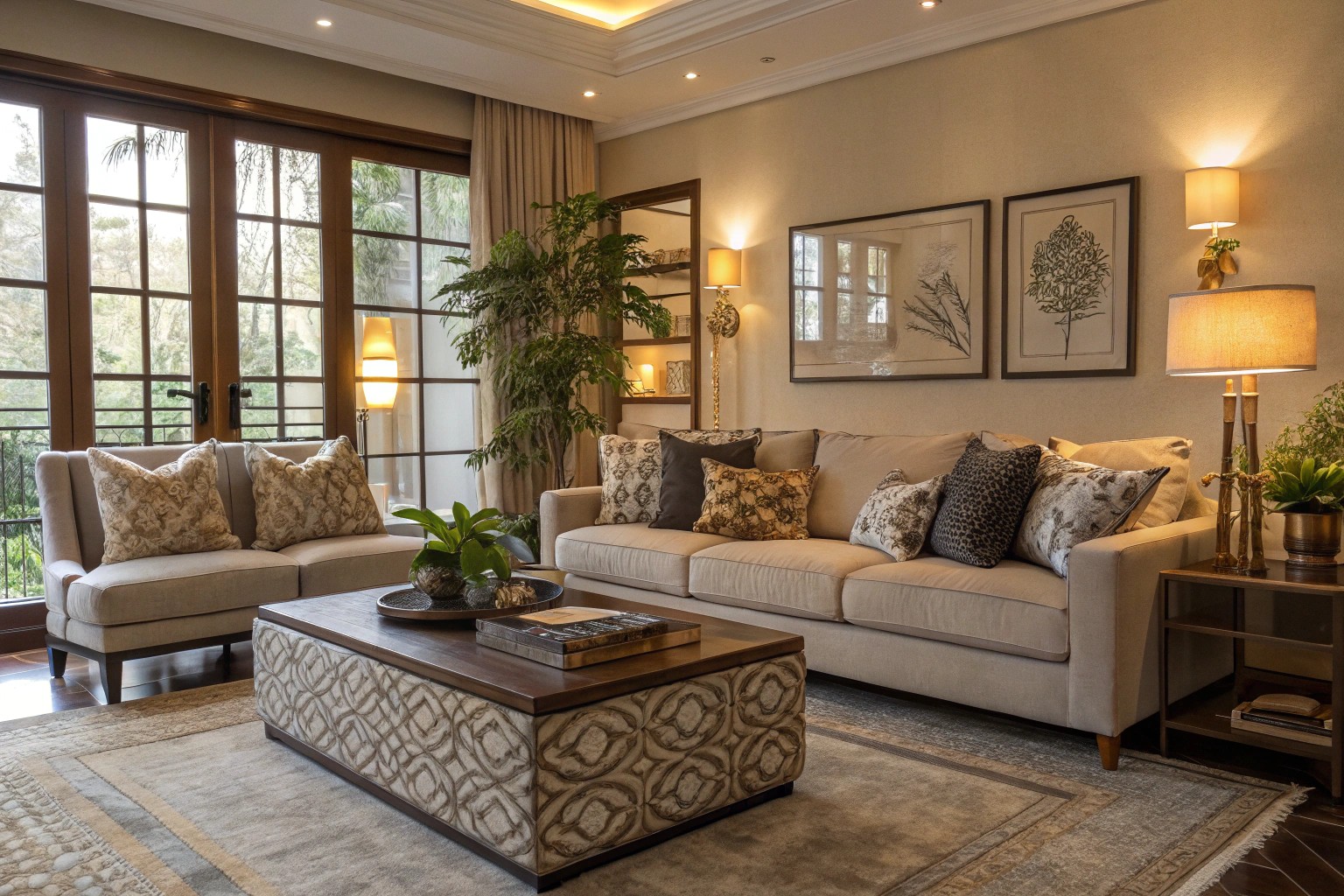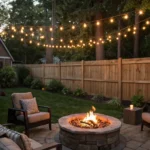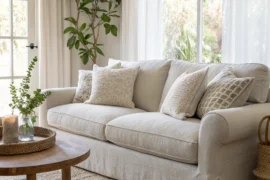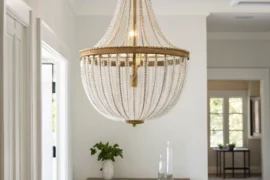In thirty years of designing interiors, I’ve learned that the difference between a room that feels complete and one that leaves you wondering “what’s missing?” often comes down to a handful of overlooked details. These finishing touches are what transform a space from simply furnished to thoughtfully designed, creating environments that feel both polished and lived-in.
The Architecture of Completion: Understanding Room Layers
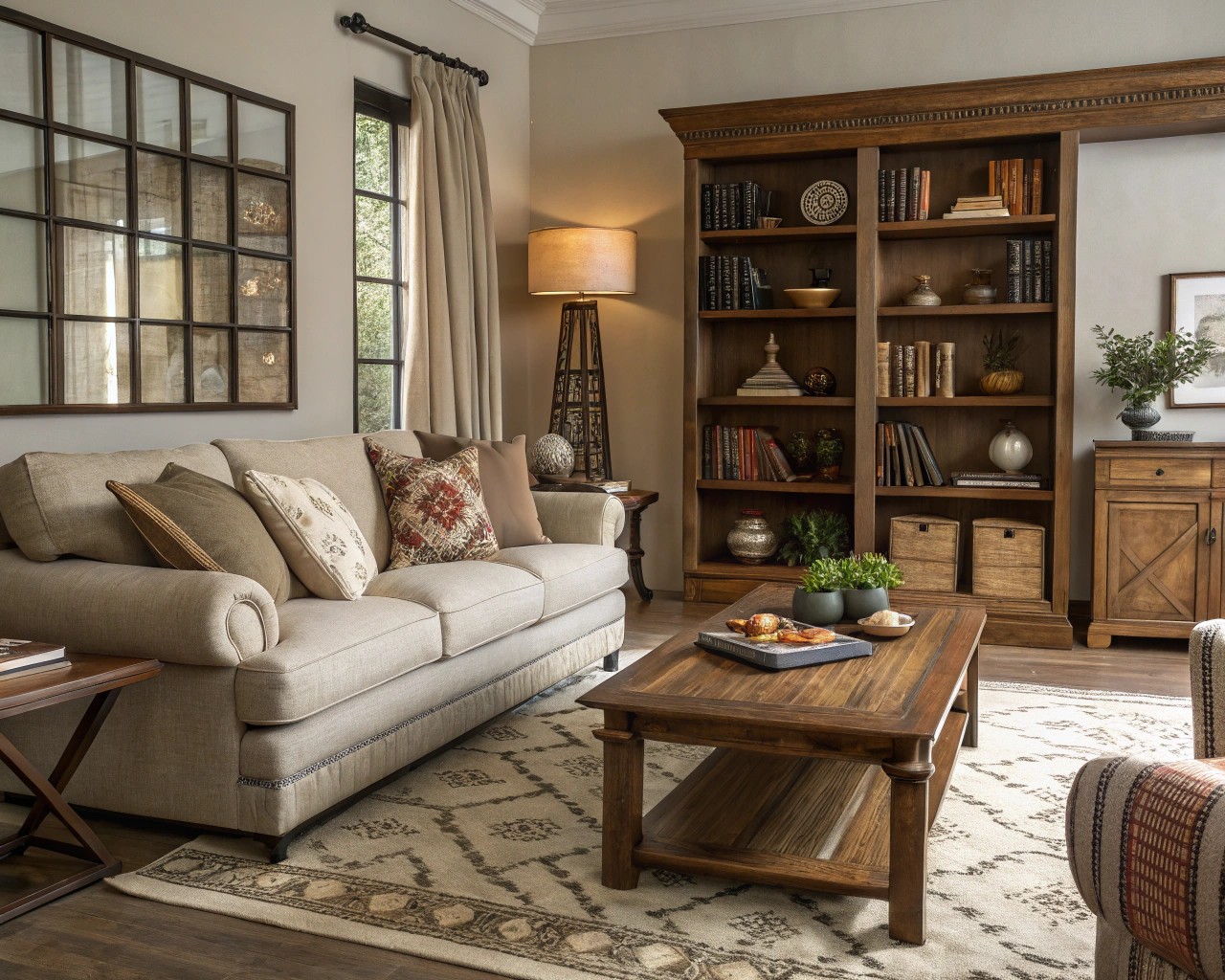
Every well-finished room operates on three distinct layers, each serving both functional and aesthetic purposes. The first layer encompasses your major furniture pieces and structural elements—the sofa, dining table, and built-in features that define the room’s primary function. The second layer introduces the elements that create depth and visual interest, including area rugs, window treatments, and lighting systems. Finally, the third layer consists of the personal touches and refined details that give a space its unique character and sense of completion.
Understanding this layered approach helps explain why a room might feel incomplete even when all the “big” pieces are in place. Often, it’s the second and third layers that homeowners rush through or overlook entirely, leaving spaces that function well but lack the cohesive, finished quality that makes them truly inviting.
The psychological impact of these layers cannot be understated. Spaces that feel unfinished can create subtle stress and dissatisfaction, while properly completed rooms promote relaxation and contentment. This is particularly important in American homes, where open floor plans mean that finishing touches in one area significantly impact the overall flow and harmony of adjacent spaces.
Lighting: The Foundation Layer Most People Get Wrong
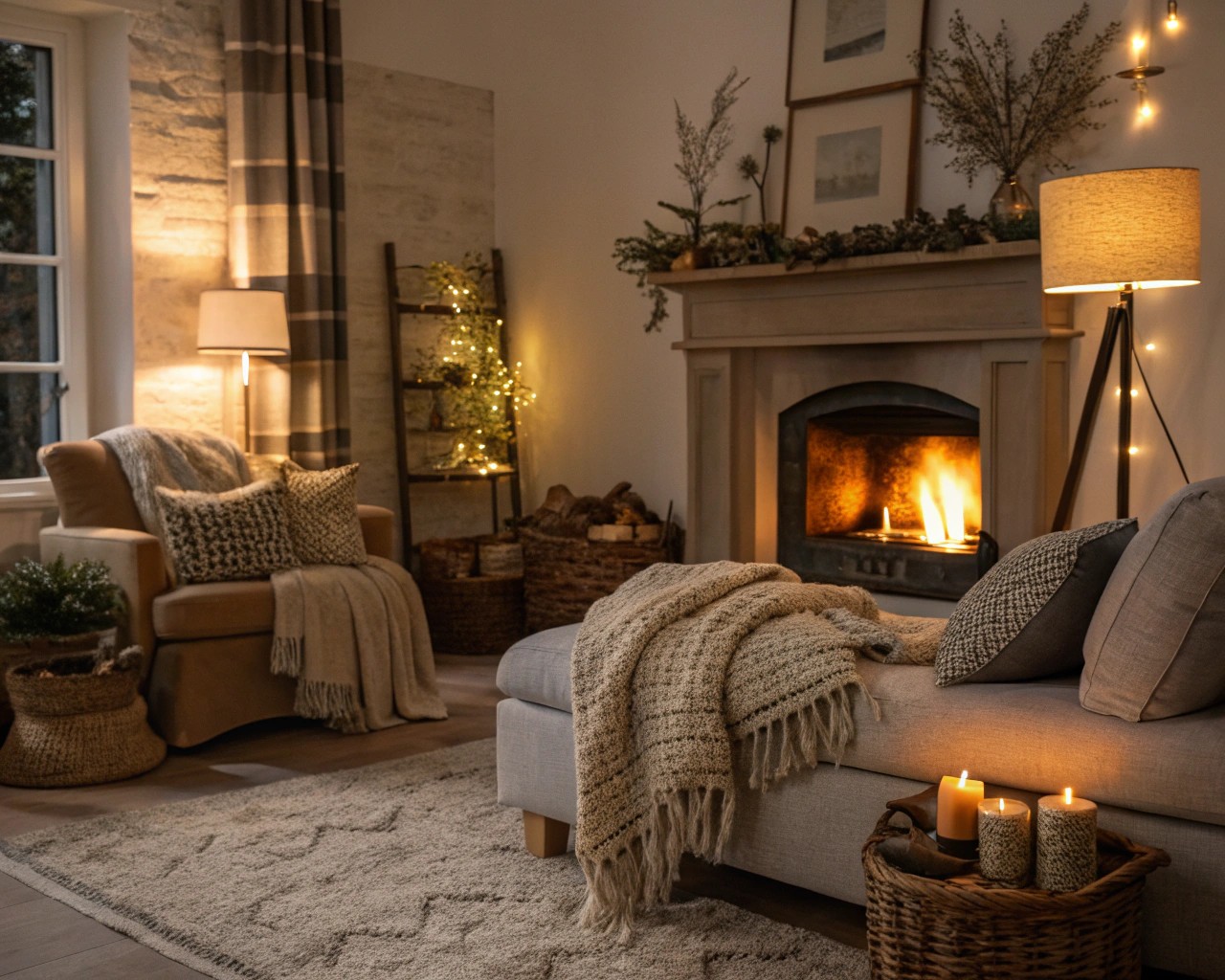
Ambient, Task, and Accent: The Trinity of Interior Lighting
Proper lighting design requires three distinct types working in harmony: ambient lighting provides general illumination, task lighting offers focused light for specific activities, and accent lighting creates drama while highlighting architectural features or artwork. Most homeowners install overhead fixtures and call it complete, missing the transformative power of layered lighting.
I consistently see clients struggling with rooms that feel flat or unwelcoming, only to discover they’re relying solely on overhead lighting. The solution involves incorporating multiple light sources at different heights and intensities. Table lamps, floor lamps, wall sconces, and even candles contribute to creating the warm, inviting atmosphere that signals a finished space.
The Technology Integration Advantage
Modern lighting solutions offer unprecedented control over ambiance through dimmer switches and smart LED bulbs. These technologies allow you to adjust lighting throughout the day, creating different moods for various activities. Installing dimmer switches represents one of the most cost-effective upgrades for achieving that polished, intentional feeling in any room.
Consider this practical approach: Start with ambient lighting at 30% intensity, add task lighting where needed for reading or work, then incorporate accent lighting to highlight artwork, plants, or architectural features. This layered approach instantly elevates the sophistication level of any space while providing the functional flexibility modern lifestyles demand.
Textile Layers: The Unsung Heroes of Room Completion
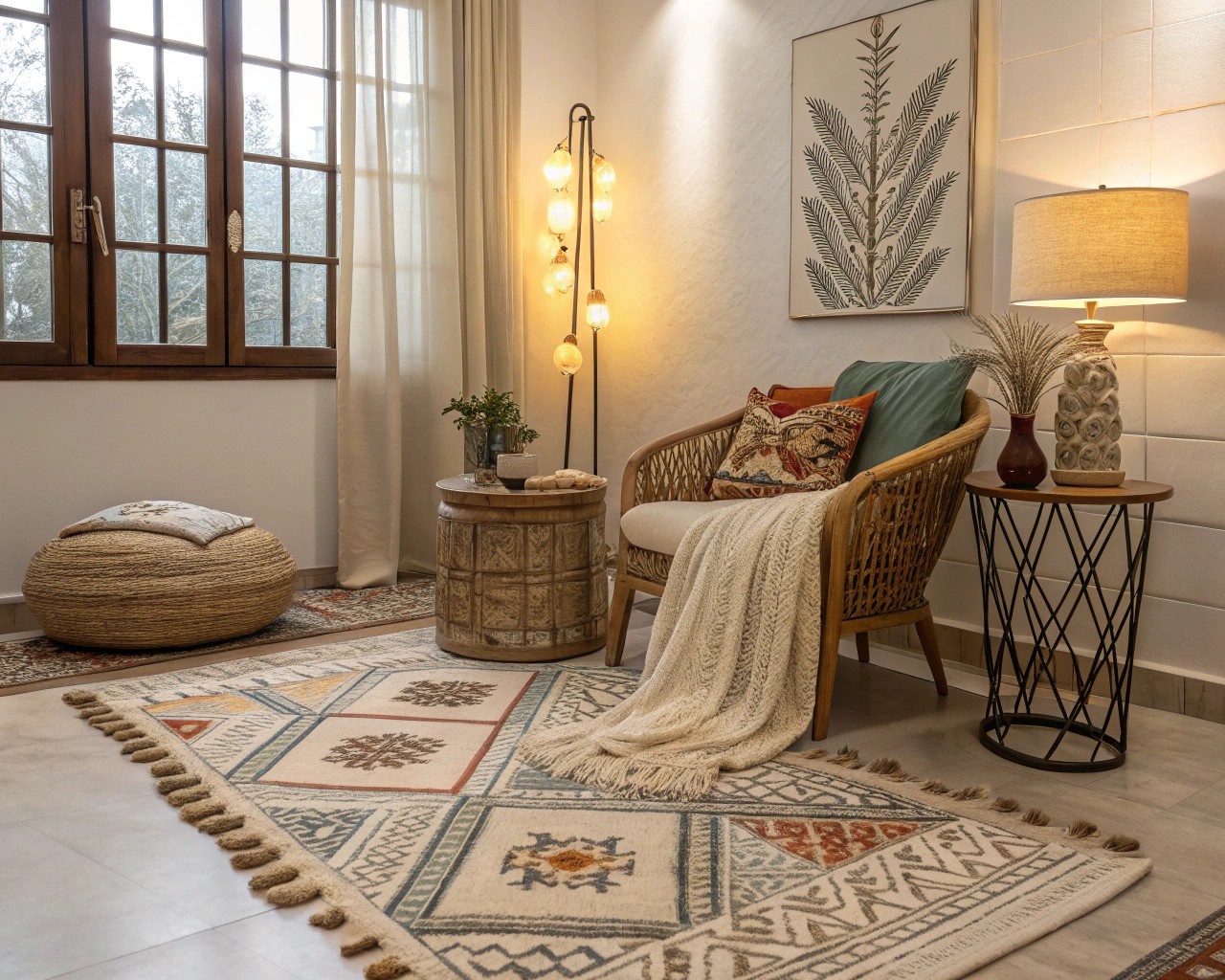
Area Rugs as Space Definers
The single most transformative addition to an unfinished room is often a properly sized area rug. Rugs serve multiple critical functions: they define seating areas in open floor plans, add warmth and texture, and provide the visual anchor that brings furniture groupings together. The key lies in selecting the right size—too small, and the rug appears to float awkwardly; too large, and it overwhelms the space.
For living rooms, the front legs of all seating should rest on the rug, creating a cohesive conversation area. In dining rooms, the rug should extend at least 24 inches beyond the table on all sides, allowing chairs to remain on the rug when pulled out. These measurements ensure the rug functions as intended while contributing to the room’s finished appearance.
Window Treatments: Height and Fullness Matter
Nothing signals an unfinished room quite like improperly proportioned window treatments. Curtains should hang from the ceiling or at least 12-18 inches above the window frame, with fabric fullness of 2.5 to 3 times the window width. This approach makes windows appear larger while adding the vertical lines that make ceilings feel higher.
The psychology behind proper drapery installation runs deeper than mere aesthetics. Full-height, properly proportioned window treatments create a sense of luxury and attention to detail that immediately elevates a space’s perceived quality and completion level.
Throw Pillows and Blankets: The Art of Casual Elegance
Strategic placement of throw pillows and blankets adds the final layer of comfort and visual interest. The key lies in mixing different sizes, textures, and patterns while maintaining a cohesive color palette. Groups of three work particularly well, with varying heights and textures creating visual rhythm and interest.
The Living Elements: Plants and Natural Integration
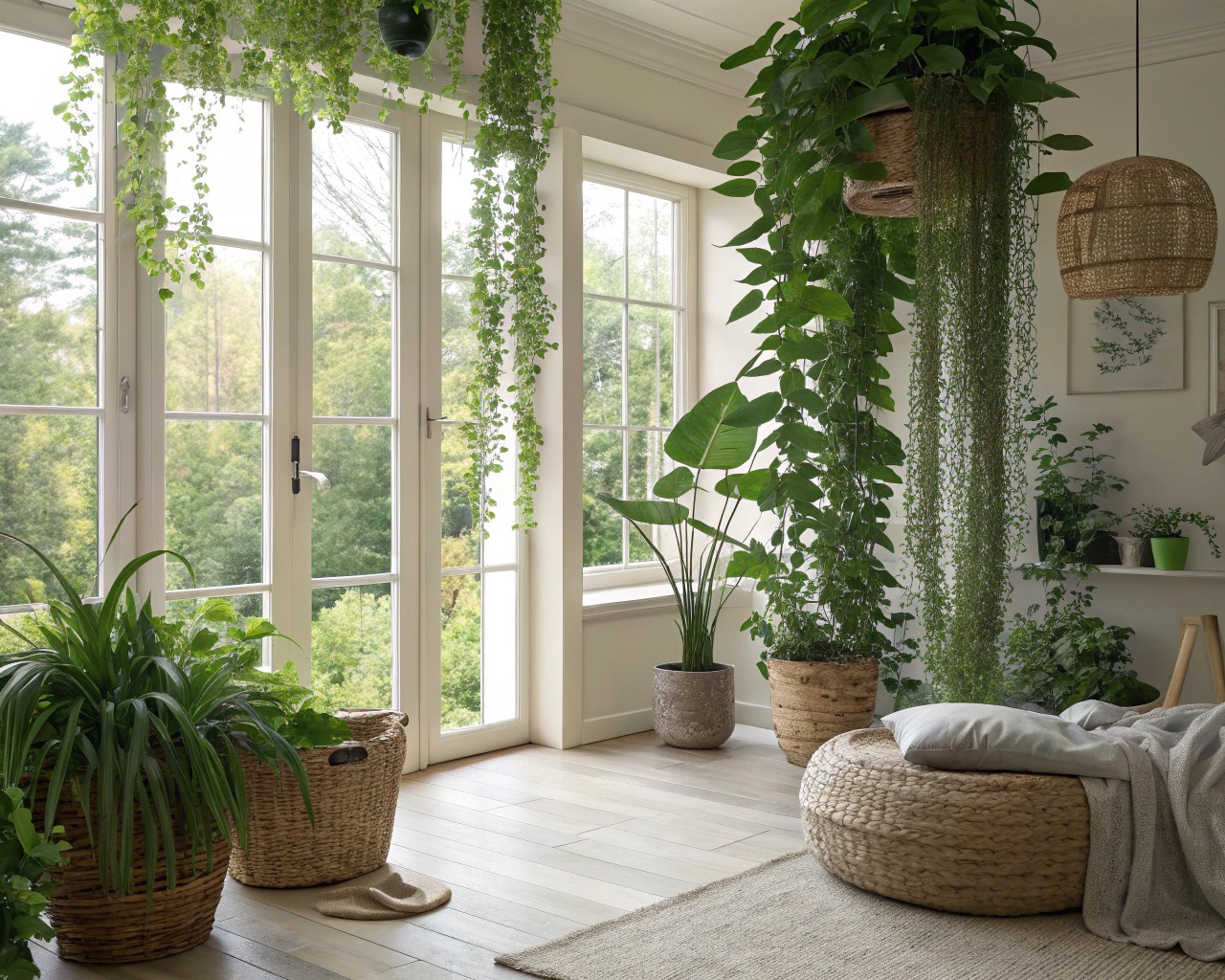
Greenery as Life Force
Few elements transform a space as dramatically as living plants. Beyond their aesthetic contribution, plants improve air quality and create a connection to nature that makes interiors feel more alive and complete. The strategic placement of plants—whether a tall floor plant filling a corner or small potted herbs on a kitchen windowsill—signals that a space is cared for and thoughtfully maintained.
For those concerned about plant care, modern irrigation systems and low-maintenance varieties make it easier than ever to incorporate greenery successfully. Snake plants, pothos, and ZZ plants thrive in various lighting conditions while requiring minimal maintenance, making them ideal choices for completing room designs.
Seasonal Adaptability
Fresh flowers or seasonal branches in simple vases provide an easy way to keep rooms feeling current and finished. This approach requires minimal investment while offering maximum impact, particularly on console tables, dining surfaces, or bedside tables where the eye naturally seeks visual interest.
Personal Character: The Elements That Make It Yours
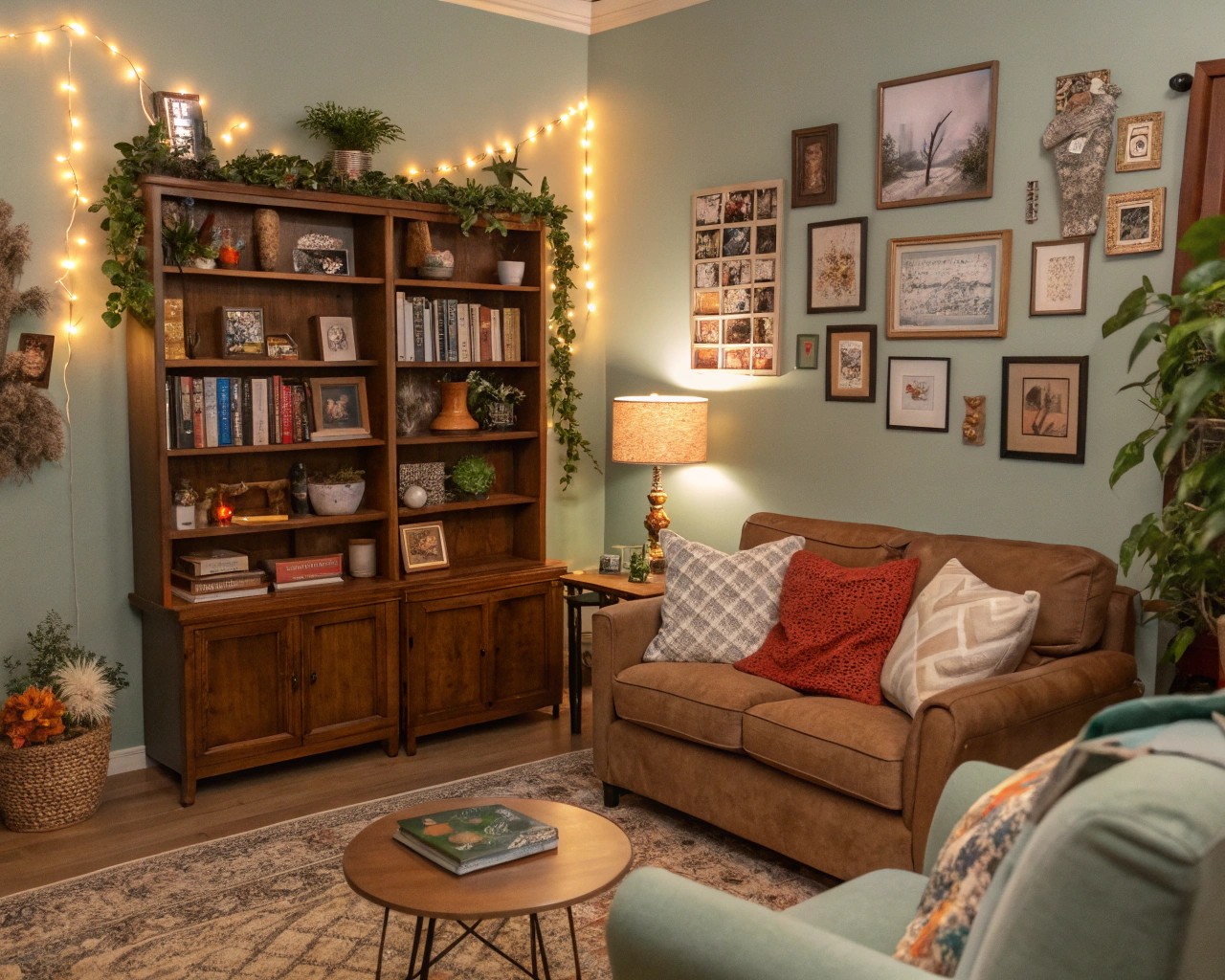
Curated Collections and Memory Keepers
The most beautifully finished rooms tell stories about their inhabitants through carefully curated personal items. Family photographs, travel souvenirs, and meaningful collections create the emotional connection that transforms a house into a home. The key lies in thoughtful editing and presentation rather than overwhelming display.
Create gallery walls using frames of varying sizes but consistent finishes, or dedicate specific surfaces to meaningful objects arranged in odd-numbered groupings. These personal touches should feel intentional rather than accidental, contributing to the overall design narrative while expressing individual personality.
The Art of Vignettes
Professional designers use vignettes—small, curated styling statements—to create focal points throughout a space. These arrangements typically include three to five objects of varying heights, textures, and purposes, creating visual interest while serving functional needs. A bedside table might feature a lamp, small plant, and favorite book, while a console table could showcase a mirror, decorative bowl, and candle grouping.
Architectural Details: The Framework of Finish
Trim Work and Moldings
The often-overlooked details of trim work, baseboards, and crown moldings significantly impact a room’s finished appearance. These elements provide visual transitions between different surfaces and materials while adding the polished quality that distinguishes professionally designed spaces from amateur attempts.
While major millwork installation requires professional expertise, smaller updates like replacing basic switch plates and outlet covers with more sophisticated alternatives can dramatically improve a room’s finished appearance. These details interact with daily use, making their upgrade particularly satisfying.
Hardware as Jewelry
Cabinet handles, drawer pulls, and door hardware function as a room’s jewelry—small details that significantly impact the overall impression. Upgrading these elements provides an affordable way to refresh existing furniture while contributing to the cohesive, finished aesthetic that signals thoughtful design.
Consistency in hardware finishes throughout connected spaces creates flow and intentionality. Whether choosing brushed brass, matte black, or polished chrome, maintaining this finish across all hardware elements reinforces the sense of completion and professional attention to detail.
Storage Solutions: Function Meets Form
Hidden Organization Systems
Clutter consistently undermines the finished appearance of otherwise well-designed rooms. Successful finishing requires designated storage for all the small items that accumulate in daily life—from remote controls to charging cables to seasonal accessories. Beautiful storage solutions, such as woven baskets, decorative boxes, or built-in cabinetry, address these needs while maintaining visual appeal.
The principle involves giving every item a designated home, allowing spaces to maintain their finished appearance even during daily use. This approach requires initial planning but pays dividends in both aesthetic appeal and functional efficiency.
Color and Contrast: The Unifying Forces
The Power of Accent Colors
Neutral room schemes benefit tremendously from strategic color introduction through accessories and accent pieces. Rather than overwhelming a space with bold furniture choices, introduce color through easily changeable elements like throw pillows, artwork, or decorative objects. This approach allows for seasonal updates while maintaining the foundation investment in larger furniture pieces.
Creating Visual Flow
Successful room completion requires visual flow between different elements and areas. This involves repeating colors, textures, or design motifs throughout the space, creating connections that make everything feel intentionally related rather than randomly assembled.

